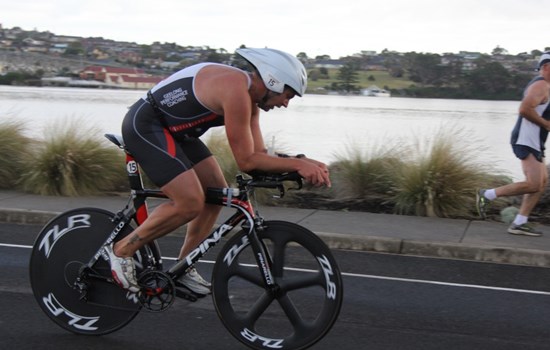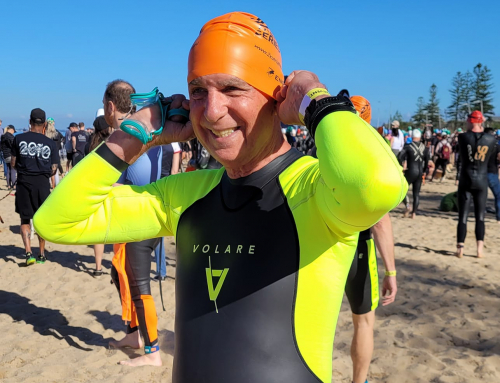By Colin Leeson- Owner TLR Race Wheels
They say that adding a set of Carbon wheels to your bike is the best way to make it look super sexy.
This is certainly true, but you might be surprised at the amount of other reasons why you would set yourself up with carbon wheels.
As owner of the TLR wheel brand, I am constantly amazed to hear how people’s performance improves after purchasing their new wheels (or renting them through our TLR Race Wheel Rental business). This excites me about the product we supply and the benefit we can provide for people competing in our sport.
I share with many of our customers my ideas on the “10 reasons why you need carbon wheels” to improve their bike performance.
Aerodynamically
It is said that up to 95% of riding effort is used to overcome wind resistance and the other 5% is actually used for efficient propulsion. The objective then is to make everything to do with cycling as streamlined as possible. This is why frames, components, wheels, helmets, seating position and even the type of material used for clothing are constantly evolving to gain precious advantages in the 95% part of riding.
The first two points are on aerodynamic advantage:
- Deeper dish. Airflow around the wheel as it slices through the air is the first aerodynamic consideration. In a normal “standard” rim the airflow is quite turbulent as it wraps around the tyre then behind the rim into the spoke area. This turbulence is reduced on deeper dish wheels. To summarise quite a technical subject, the deeper the dish, the less turbulence at the back of the rim allowing them to slice through the air faster.
The shape of the wheel is also an area of improvement with the most current wheels using a “U” shaped rim whereas not long ago the “V” shape was thought to be fastest. - Rim width. Rim width looks at how smooth the sidewall of the tyre is compared to the side of the rim. Having a flat surface along this side again reduced air turbulence. Most wheel companies are now offering wheel widths between 23 and 28mms. Advice for which width to use varies but for most triathletes we recommend a 23 or 25mm wide wheel with a 23mm wide tyre with the 25mm being preferred. The combination of 23mm wheel and tyre has the tyre being slightly wider than the rim which gives very slight turbulence. The 25mm wheel and 23mm tyre means the tyre when fully inflated is slightly narrower than the wheel AND it is more solid on the road (next point)
Solidness on the road – tyre bulge
- Imagine a 19mm wide rim with a 23mm tyre fitted to it. The tyre will “bulge” out each side of the rim by a couple of mm. When riding this type of combination as the rider corners the tyre will roll from side to side on the rim with the cornering pressure.
Now imagine the same tyre (23mm) fitted to a 23mm wheel. This time there is no bulge and the tyre profile has a much wider / flatter curve. This reduces significantly the amount of sidewise “roll” that the tyre has and also gives a wider flat surface for road contact.
The result is a much more “solid” feel to the ride.
People racing complex courses such as typical draft legal courses benefit greatly by this.
Consider the 25 mm wheel and 23mm tyre: the result is an even flatter curve = more solid feel and better road contact.
Weight
- Carbon wheels are light. Carbon is an amazingly strong product and is used in many applications to make products from bikes to cars and planes lighter and stronger. The benefit this gives to bike wheels is weight reduction. A typical pair of carbon wheels can weigh just over 1 Kg which can be 500 grams or more less than the standard aluminium wheels.
Rolling performance
- Rolling resistance (bearings / hubs). Most carbon wheels are supplied with superior bearings and hubs with allow the wheels to roll much better.
- Momentum. An interesting thing happens with deeper dish wheels. They can end up pushing the rider along the road. Sound too good to be true? This is what happens:
The full disk carbon wheels are the extreme example of this phenomenon where they build up a centrifugal force once spinning which propels them forward and keeps them spinning forward. (If you are mechanically minded this is just like a flywheel in a car engine.)
A disk wheel takes a little more effort to get wound up but once going it is significantly easier to maintain the speed thanks to what I refer to as this centrifugal momentum.A couple of notes on disks:
Because they want to keep going forward, these types of wheels are harder to slow down too, so if the event you are entering has lots of turns and accelerations the disk is likely not the best choice.
In case anyone is asking, Disk wheels are used on the rear only. (the occasional exception being indoors velodrome racing) The reason is the effects of wind on the rear wheel are manageable whereas a disk front wheel would be extremely dangerous.
Disk wheels are an expensive investment and if you are a serious non-draft triathlete or TT rider with a couple of thousand dollars to spare a disk wheel will give you great results but for many the price is outside the budget.
The good news is deeper dish carbon wheels exhibit to a lesser extent these characteristics. The 88mm deep TLR C88 rear wheel in the TLR TT Combo is a great mid-point option, allowing ease of braking at corners but still building nice momentum on the straight sections.
Stiffness
- Power to road. As I pointed out, carbon is amazingly strong for its weight. This strength allows wheels to be stiffer in a sideways direction meaning less energy is lost by flex in the rim and more energy is transferred to the road. This results in more efficient riding.
Part of the reason for the wheel stiffness is the shorter spokes needed for a deep dish rim: deeper dish = shorter spokes = stiffer wheels - Flexibility in compression. This is another surprising thing about carbon wheels. While the wheels are stiffer in a sideways direction as described above they are more flexible in compression.
When first riding carbon wheels you might hit a bump on the road and it feels like you are riding on a partially deflated tyre. This is because the wheel has absorbed some of the impact of the bump.
The benefit of this for the triathlete is the ride becomes slightly more “relaxed” which leaves a little more for the run.
Psychological
- This point is a little harder to quantify but bear with me and you will agree.
There is something about how it affects you when you feel good. If you jump on the bike and it feels great then you usually find you do well on the day.
Why is this?
Clearly you can do better because the bike is better however it can also be argued that part of the improvement is you as an athlete doing better on the day simply because you felt good. It’s like the “having a good day” thing. You feel good on the day so you perform better.
So in summary fitting a set of carbon wheels always makes you feel better and the performance increase you experience is likely compounded by the fact that you feel good so perform better.
Looks
10. We mentioned number 10 at the start and it is that bikes look HOT with a set of carbon wheels fitted!!!
What do the ten points really mean on race day?
It has been great hearing back from wheel and rental customers as to how much the wheels have heled their races.
Feedback from our triathlete customers suggests carbon wheels can give the following approximate improvements:
40 min improvement over an Ironman triathlon 180k distance.
20 min over 70.3 (90k)
Up to 10 mins over Olympic distance events (40k).
Carbon wheels come in a wide range of makes and prices ranging from cheap imports for under $1000 through midrange wheels up to high end brands like Zipp and ENVE for many thousands of dollars.
TLR Race Wheels
We set up the TLR brand aiming to provide a midrange priced wheel which has great quality but suits the budget of the majority of age groupers.
Our goal is to be the best wheel in our price range and feedback tells us we are achieving this goal.
We have two wheel series with a pair of the Aero wheels ranging between $1200 and $1600 and the up-specked Elite series wheels ranging between $1800 and $2200.
Note. With the decline of the $AUS over the last 12 months, our competitors have raised their prices by 30% or more.
For 2016 TLR have decided to freeze our prices at 2015 levels in an effort to grow our brand and gain some market share.
TLR also has a rental department where wheels are available for hire for those athletes wanting an improvement for a particular race but not ready or able to purchase wheels.
I welcome any further questions you might have regarding carbon wheels and which ones suit your needs.









